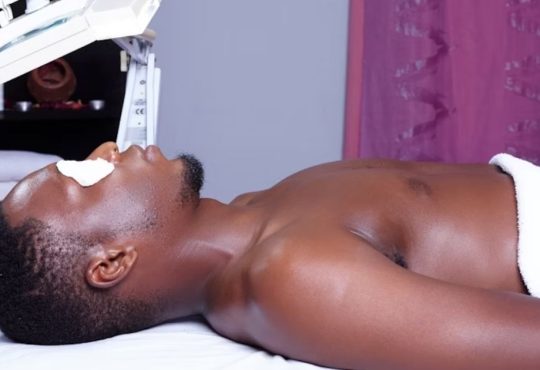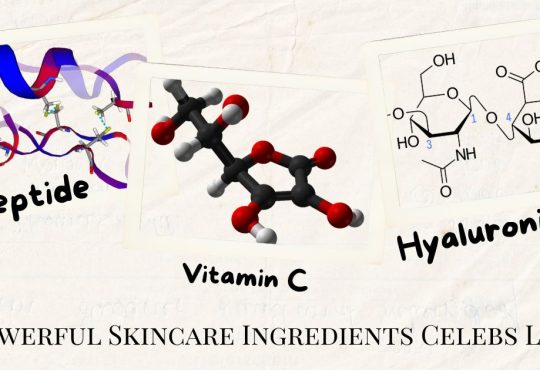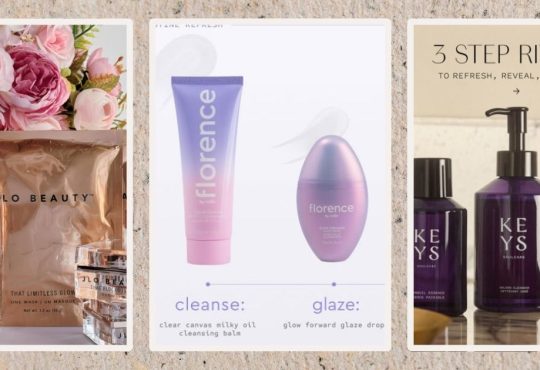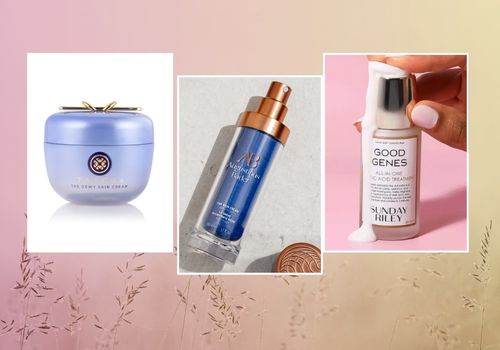Keratosis pilaris, commonly referred to as “chicken skin,” is a harmless yet often frustrating skin condition characterized by small, rough bumps on the skin. These bumps typically appear on the upper arms, thighs, buttocks, and occasionally on the cheeks, giving the skin a sandpaper-like texture. The condition occurs when keratin, a protein that protects the skin, builds up and plugs the hair follicles, resulting in the characteristic patches. While it’s not painful or contagious, many people seek treatment to smooth the skin’s appearance and reduce redness.
While harmless, KP can be persistent and cosmetically frustrating, especially when the skin becomes dry or inflamed. With the proper body skincare routine, it’s possible to manage symptoms, smooth texture, and improve overall skin appearance.
Understanding Keratosis Pilaris
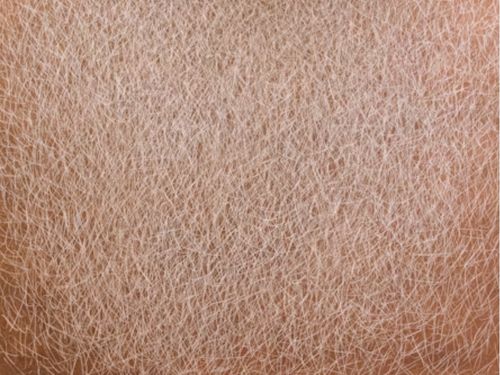
KP occurs when keratin, a protein in the skin, builds up and blocks hair follicles, resulting in the formation of tiny bumps. Contributing factors include:
- Dry skin or low humidity
- Genetics and family history
- Hormonal changes
- Sensitivity to certain skincare products
Although KP cannot be permanently cured, proper care and consistent routines can minimize bumps, reduce redness, and improve skin texture.
Step 1: Gentle Cleansing
Begin with a gentle, hydrating body wash that avoids harsh sulfates and fragranced soaps, which can further irritate sensitive skin. Look for cleansers containing:
Lactic Acid
Lactic acid, a type of alpha-hydroxy acid (AHA), provides gentle exfoliation while simultaneously drawing moisture into the skin. It helps break down keratin buildup, smoothing rough, bumpy areas associated with keratosis pilaris (KP). Its hydrating properties also improve skin suppleness and support long-term texture improvement without causing harsh irritation.
Glycerin or Ceramides
Glycerin acts as a powerful humectant, attracting water to the skin, while ceramides reinforce the skin’s natural barrier. Together, they restore hydration, strengthen barrier function, and prevent moisture loss, keeping KP-prone areas soft, resilient, and protected from environmental stressors.
Oat Extract
Oat extract provides soothing benefits, helping to calm irritation, redness, and inflammation often associated with KP-affected skin. Rich in antioxidants and anti-inflammatory compounds, it helps reduce discomfort while enhancing the overall health and appearance of the skin. Incorporating oat extract into daily care promotes a calmer, smoother, and more balanced complexion.
Warm water is preferable to hot water, as it can dry out the skin and exacerbate KP bumps.
Step 2: Exfoliation
Regular exfoliation is crucial for managing KP, as it helps clear clogged follicles and smooth rough patches. Options include:
Chemical Exfoliants
Chemical exfoliants, including alpha-hydroxy acids (AHAs) such as lactic acid or glycolic acid, and beta-hydroxy acids (BHAs) like salicylic acid, help dissolve the buildup of keratin that causes the rough, bumpy texture of keratosis pilaris (KP). AHAs work on the surface of the skin to gently loosen dead cells, improving smoothness and enhancing moisture absorption. BHAs penetrate slightly deeper into the pores, clearing excess oil and preventing follicular blockages. Regular, consistent use of chemical exfoliants helps maintain even skin texture, reduces redness, and supports the effectiveness of hydrating and barrier-strengthening products.
Gentle Physical Exfoliants
Mild physical exfoliants, such as soft body brushes or gentle scrubs, offer a gentle yet effective method for removing dead skin cells and promoting circulation. When used sparingly, these tools can complement chemical exfoliation by smoothing bumpy areas and enhancing product absorption. Overuse, however, may irritate sensitive KP-prone skin, so moderation and gentle techniques are essential. Combining both chemical and gentle physical exfoliation creates a balanced approach that encourages smoother, healthier, and more resilient skin over time.
Exfoliate 2–3 times a week to prevent over-drying while promoting smoother, healthier-looking skin.
Step 3: Targeted Treatment
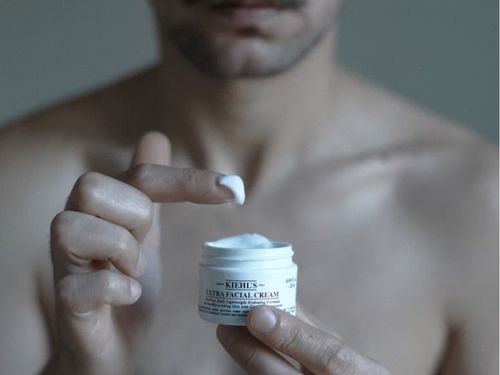
After cleansing and exfoliation, apply treatment products designed for KP:
Urea Creams
Urea-based creams are highly effective for keratosis pilaris (KP) because they help soften excess keratin that causes rough, bumpy patches. By gently breaking down keratin buildup, urea smooths the skin’s texture and promotes a more even surface. Additionally, urea has humectant properties, drawing water into the skin to maintain hydration and reduce dryness in affected areas.
Lactic Acid or Glycolic Acid Lotions
Lotions containing lactic acid or glycolic acid provide continuous, gentle exfoliation throughout the day, allowing for a smooth, even appearance. These alpha-hydroxy acids help prevent clogged follicles by removing dead skin cells, improving skin smoothness, and enhancing the effectiveness of moisturizers and other treatments. Regular use supports long-term texture improvement while minimizing irritation when applied consistently at low concentrations.
Moisturizers with Ceramides
Ceramide-enriched moisturizers strengthen the skin barrier, locking in hydration and protecting KP-prone areas from environmental stressors. By reinforcing the barrier, ceramides help prevent moisture loss, reduce irritation, and maintain the soft, supple feel achieved through exfoliation and emollient care. Incorporating ceramides into a daily routine ensures smoother, healthier skin and supports overall resilience against flare-ups.
Consistency is essential—treatment products should be applied daily to the affected areas.
Step 4: Deep Hydration
Moisturized skin is less prone to KP flare-ups. Use rich, emollient body lotions or creams immediately after bathing to seal in moisture. Ingredients that help include:
Shea Butter or Cocoa Butter
Rich, emollient butters, such as shea and cocoa, provide deep nourishment and softening for skin prone to keratosis pilaris. Their thick, protective texture helps reinforce the skin barrier, preventing moisture loss while soothing rough, dry patches. Regular use promotes a smoother, more supple texture and reduces the appearance of bumps associated with KP.
Squalane or Jojoba Oil
Lightweight oils such as squalane and jojoba offer hydration without clogging pores, making them ideal for sensitive or KP-affected areas. These oils mimic the skin’s natural sebum, balancing moisture levels while improving elasticity and softness. Their non-greasy texture allows for comfortable, all-day hydration that complements other treatments.
Glycerin or Hyaluronic Acid
Humectants, such as glycerin and hyaluronic acid, actively draw water into the skin, providing long-lasting hydration and plumping rough, bumpy areas. By maintaining optimal moisture levels, these ingredients help soften keratin buildup, smooth the skin’s surface, and strengthen the barrier against environmental stressors. Consistent application ensures KP-prone skin stays hydrated, resilient, and more comfortable over time.
Daily moisturizing is a critical step in managing KP effectively.
Step 5: Lifestyle and Supportive Habits
Avoid Hot Showers or Prolonged Baths
Excessively hot water and long baths can strip the skin of its natural oils, exacerbating dryness and roughness in keratosis pilaris (KP)-prone areas. Shorter, lukewarm showers help maintain the skin’s protective barrier and preserve moisture, reducing irritation and flakiness.
Use Gentle Fabrics
Clothing made from soft, breathable materials such as cotton minimizes friction and irritation against KP-affected skin. Avoiding rough fabrics, tight clothing, and synthetic fibers that come into contact with sensitive areas helps prevent flare-ups and discomfort.
Maintain Humidity in Living Spaces
Dry indoor air, especially during the winter months, can worsen KP by dehydrating the skin. Using a humidifier or maintaining balanced moisture levels in living spaces supports skin hydration, complements moisturizers, and helps maintain overall skin barrier function.
Consistent Exfoliation and Moisturization
Even in colder months, maintaining a routine of gentle exfoliation and regular moisturizing is key to managing KP. Exfoliation removes excess keratin buildup, while deep hydration helps prevent roughness and maintain smoothness. Consistency ensures that skin remains supple, resilient, and less prone to irritation caused by seasonal dryness.
These habits help reduce irritation and flare-ups, ultimately supporting smoother skin over time.
Step 6: Sun Protection
While keratosis pilaris (KP) is not directly caused by sun exposure, protecting the skin from UV rays is essential for maintaining a uniform tone and preventing further irritation. Daily application of a broad-spectrum sunscreen with SPF 30 or higher safeguards KP-prone areas, particularly when treatments involve active ingredients like alpha-hydroxy acids (AHAs) or beta-hydroxy acids (BHAs), which can increase photosensitivity. Sun protection helps prevent redness, inflammation, and post-inflammatory hyperpigmentation, which can make KP patches more noticeable.
Incorporating SPF into both morning routines and outdoor activities supports long-term skin health and enhances the results of exfoliating and moisturizing treatments. Lightweight, non-comedogenic formulas can provide consistent protection without clogging pores or exacerbating texture issues. Regular sun protection, combined with consistent KP care, ensures that the skin remains smooth, balanced, and resilient, while minimizing visual contrast caused by pigmentation or irritation.
Step 7: Professional Treatments (Optional)
For persistent or severe KP, dermatologists may recommend:
Prescription-Strength Exfoliants
For more persistent cases of keratosis pilaris (KP), prescription-strength exfoliants, such as topical retinoids or higher-concentration alpha- and beta-hydroxy acids, provide more intensive treatment. Retinoids accelerate skin cell turnover, preventing keratin from clogging follicles, while stronger acids help break down existing buildup and smooth rough patches. These treatments are typically used under medical supervision to maximize effectiveness while minimizing irritation.
Laser Therapy
Laser treatments offer a targeted approach for reducing redness and minimizing bumps associated with KP. Specific laser technologies can calm inflammation, diminish pigmentation, and encourage healthier skin renewal in affected areas. While multiple sessions may be necessary for optimal results, laser therapy can significantly improve both texture and tone, particularly for areas resistant to topical care.
Chemical Peels
Chemical peels serve as a controlled method to exfoliate and smooth the skin’s surface. By removing the outer layer of dead cells, peels reduce roughness and promote the growth of softer, more even skin. Depending on the intensity, peels can be customized for KP-prone areas to en.
These options can complement daily at-home routines for more noticeable improvement.
Step 8: Mindful Routine and Consistency
Consistency is the cornerstone of effective keratosis pilaris (KP) management. Establishing a daily body care routine that combines gentle exfoliation, deep hydration, and targeted treatments helps gradually smooth rough patches and reduce redness. Regular attention ensures that keratin buildup is minimized, skin remains nourished, and the barrier stays healthy, preventing flare-ups or irritation over time.
Mindful application further enhances results. Focusing on deliberate massage and slow product absorption not only ensures even distribution of active ingredients but also stimulates circulation and supports lymphatic drainage. This careful approach helps relax tension, encourages better nutrient delivery to skin cells, and enhances the skin’s resilience. Over time, a consistent and mindful routine can transform the skin’s texture and appearance, making KP management more effective and sustainable.
Step 9: Additional Tips
Traveling or Frequent Showering: Hydrating Mists
Frequent travel or multiple showers can strip the skin of natural moisture, worsening keratosis pilaris (KP) by leaving patches dry and rough. Hydrating facial or body mists provide a quick and convenient way to replenish lost moisture throughout the day. Spritzing a fine mist provides immediate hydration, soothes irritation, and maintains skin suppleness without interrupting routines, making it especially useful during flights, hotel stays, or on-the-go moments.
Post-Workout Care: Moisturization After Sweat
After exercise, sweat and friction can irritate KP-prone areas, triggering redness or rough texture. Prompt showering, followed by the application of a rich moisturizer, helps remove sweat, calm inflammation, and restore the skin’s barrier. Choosing formulations with humectants or soothing botanicals enhances hydration and prevents clogged pores, supporting smoother, healthier skin even with frequent workouts.
Weekly Pampering: Intensive Treatments
In addition to daily care, once- or twice-weekly treatments help accelerate improvements for KP. Specialized masks or intensive moisturizers containing ingredients such as urea, lactic acid, or ceramides help soften keratin buildup and deeply hydrate affected areas. These occasional indulgences support long-term smoothing, leaving skin softer, more even in texture, and better prepared to maintain results between treatments.
Step 10: Patience and Consistency
Effective management of keratosis pilaris (KP) relies on a steady, consistent routine rather than quick fixes. Rough, bumpy patches and accompanying redness typically improve gradually, often requiring several weeks of regular treatment before visible smoothing occurs. Consistent exfoliation helps remove excess keratin and prevent clogged follicles, while targeted therapies—such as creams containing lactic acid, urea, or salicylic acid—address the root causes of buildup. Deep moisturization reinforces the skin barrier, improving texture and reducing irritation, and daily sun protection prevents further inflammation or pigmentation. Over time, dedication to these combined strategies gradually transforms the skin, smoothing rough areas, minimizing redness, and maintaining overall skin health.
Keratosis Pilaris Made Manageable
Keratosis pilaris can be managed successfully with a structured, multi-step body skincare routine. Combining gentle cleansing, targeted exfoliation, deep hydration, sun protection, lifestyle adjustments, and optional professional treatments transforms KP-prone skin into smoother, softer, and healthier skin. Over time, persistent and mindful care can reduce bumps, improve texture, and boost confidence—proving that consistent attention and the right strategies can make KP a manageable, even subtle, skin concern.


